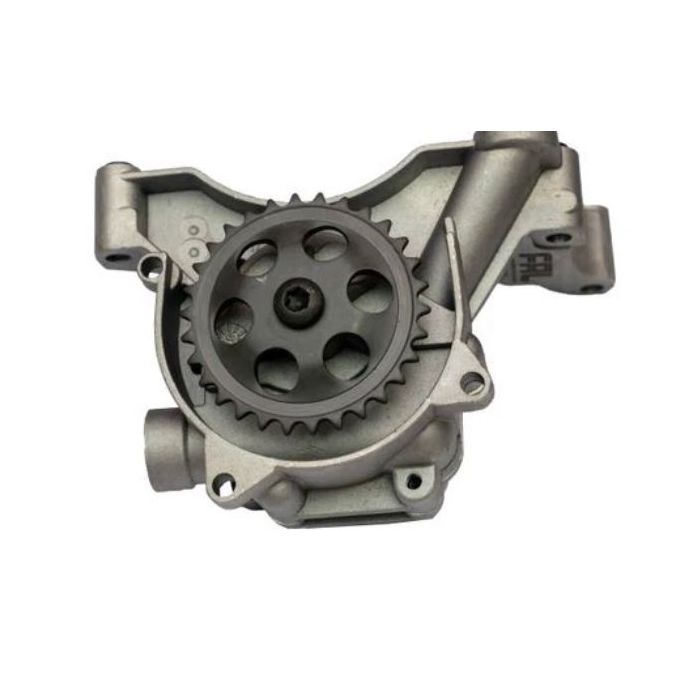Find a high-efficiency clp engine for your equipment.
Find a high-efficiency clp engine for your equipment.
Blog Article
Just How a Clp Engine Can Enhance Performance in Different Industries
The advent of CLP engines marks a considerable change in functional efficiency across different markets, driven by their capacity to optimize fuel usage and lessen downtime. As companies significantly prioritize sustainability alongside effectiveness, the function of CLP engines ends up being also extra crucial.
Introduction of CLP Engines
CLP engines, or Constant Fluid Propellant engines, stand for a considerable improvement in propulsion innovation, particularly for room applications. These engines make use of a constant feed system that enables for the sustained expulsion of propellant, bring about improved effectiveness and efficiency contrasted to traditional solid or hybrid propulsion systems. By maintaining a consistent flow of fluid propellant, CLP engines can accomplish extra specific thrust control, which is vital for navigating spacecraft in various goal situations.
The design of CLP engines incorporates advanced products and ingenious gas administration systems. clp engine. This results in minimized weight and enhanced integrity, vital factors for long-duration room objectives. The continual operation lessens the risk of burning instability, an usual challenge in standard rocket engines.

Advantages in Production
The production of Constant Fluid Propellant (CLP) engines provides a number of noteworthy advantages that enhance both performance and cost-effectiveness. Among the main benefits is the streamlined production process, which lowers the intricacy related to standard propulsion systems. By using liquid propellant, manufacturers can attain higher precision in engine performance, bring about maximized power outcome and reduced waste.
In addition, CLP engines promote a higher degree of modularity, permitting much easier combination into numerous manufacturing lines. This versatility can considerably lower preparations and improve overall functional adaptability. Using CLP technology additionally has a tendency to minimize the demand for substantial maintenance as a result of fewer relocating components, which translates right into decreased downtime and functional expenses.

Applications in Logistics
Leveraging Continuous Fluid Propellant (CLP) engines in logistics offers considerable advantages in operational performance and integrity. These engines offer a robust remedy for numerous transportation requirements, making it possible for the seamless motion of items throughout substantial ranges. The integral layout of CLP engines permits for regular power outcome, which equates into smoother and more predictable transport timetables.
Among the essential applications of CLP engines in logistics is in heavy-duty products transportation, where they can drive both ground and aerial cars. Their ability to keep high efficiency under varying load problems makes certain that shipment timelines are satisfied, thereby enhancing consumer contentment. Furthermore, CLP engines can be integrated into automated logistics systems, facilitating real-time monitoring and enhancing route preparation.
Additionally, the toughness of CLP engines decreases maintenance downtime, permitting logistics business to maximize their functional capabilities. This is specifically helpful in warehousing operations, where performance in managing and transferring items is important. As logistics continues to advance, the combination of CLP engines stands for a forward-thinking method that not just boosts efficiency but additionally sustains the market's expanding needs for dependability and rate.
Effect on Energy Performance
How do Continual Liquid Propellant (CLP) engines improve power effectiveness in transport? CLP engines utilize blog here a constant circulation of liquid fuel, maximizing combustion processes and keeping a stable thrust result. This design reduces power losses associated with conventional burning engines, where fuel shipment can differ and bring about ineffectiveness.
The continual operation of CLP engines enables an extra reliable thermal cycle, resulting in higher certain impulse contrasted to conventional engines. clp engine. This equates to decreased gas intake for the same amount of work done, dramatically decreasing operational costs across different transport markets, consisting of aeronautics and maritime industries
Furthermore, the capability of CLP engines to preserve ideal performance under varying tons discover here problems minimizes the requirement for constant velocity and slowdown, additionally boosting gas performance. Boosted power performance not just adds to cost savings however likewise results in lower greenhouse gas emissions, aligning with global sustainability goals.
Future Trends and Innovations
Arising innovations in Continual Fluid Propellant (CLP) engine modern technology pledge to transform the landscape of transport performance and sustainability. As industries pivot toward greener choices, CLP engines stand at the forefront, integrating innovative products and style methods that enhance performance while decreasing environmental impact.
Among the most promising fads is the fostering of hybrid systems that incorporate CLP engines with renewable resource resources. This harmony can optimize fuel intake and minimize emissions, straightening with worldwide sustainability goals. Developments in computational liquid dynamics (CFD) are promoting the style of even more aerodynamically effective engines, leading to reduced drag and enhanced gas effectiveness.
Furthermore, the advancement of smart tracking systems is readied to improve functional efficiencies. These systems utilize data analytics and IoT innovation to maximize engine performance in real-time, making certain that the engines operate within their most effective criteria.
As research study remains to explore alternate propellant solutions-- such as biofuels and synthetic gas-- the future of CLP engines looks encouraging. By utilizing these advancements, industries can not only boost their efficiency however likewise add significantly to a cleaner, a lot more lasting future in transportation.
Conclusion
To conclude, CLP engines stand for a significant improvement in performance throughout several sectors. Their capacity to optimize fuel usage and minimize functional costs, sites combined with a constant feed system, improves power result and functional reliability. The integration of sophisticated products and less moving parts lessens upkeep needs, while alignment with sustainability goals positions CLP engines as a critical modern technology for the future. Proceeded innovation in this field guarantees additional renovations in performance and ecological efficiency.
Report this page